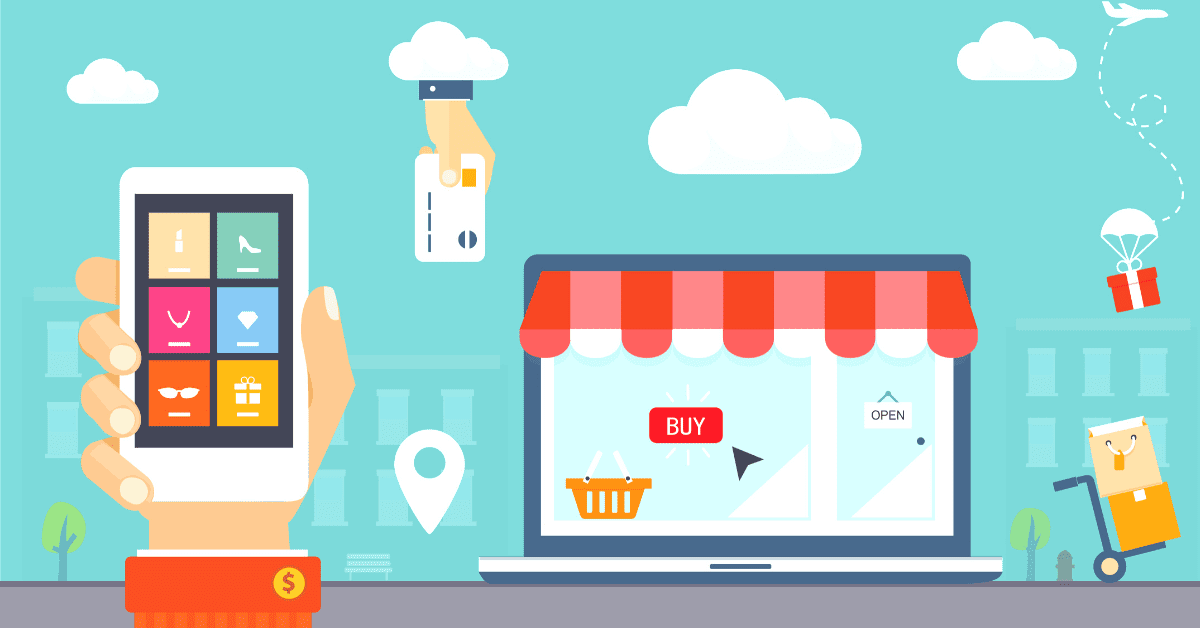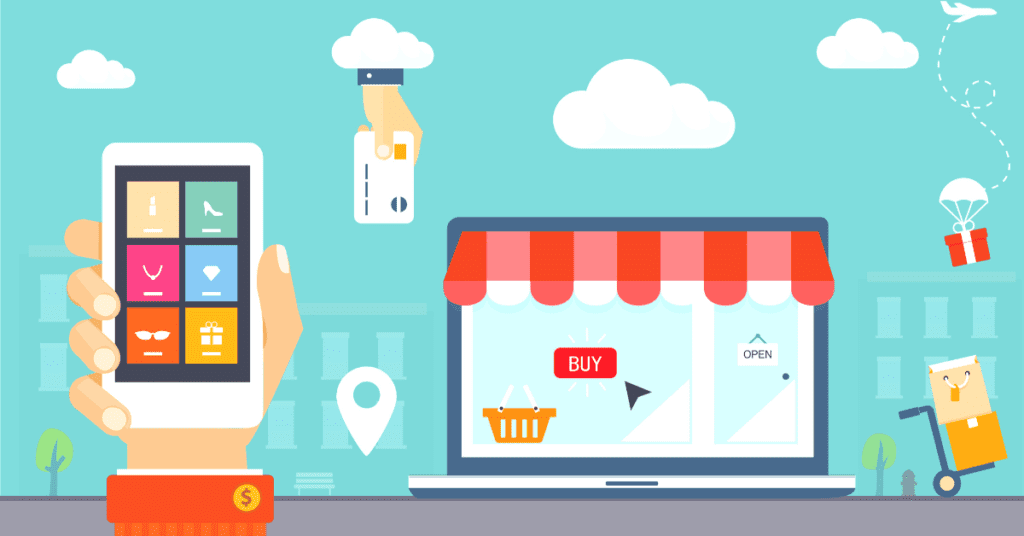Customers want the ability to shop online. If your website is not set up for e-commerce, you risk losing sales revenue.
Online shopping is growing fast. Global e-commerce sales are forecast to almost double from US$3.53 trillion in 2019 to more than US$6.54 trillion in 2023, according to Statista. In Canada, where 33 million people are online, e-commerce sales are expected to hit more than US$33 billion by 2024, up from US$25.4 billion in 2019.
The global pandemic and the rise of mobile are accelerating a global shift to online shopping that’s been building momentum over the past decade. The demand for the ability to make purchases online will only continue.
For retailers and many B2B companies, e-commerce is essential for future growth. Put another way, if you’re not selling online, you risk losing sales revenue to competitors and e-commerce giants such as Amazon and Walmart.
The good news is the move to online selling does not require a comprehensive e-commerce commitment. You can take an iterative approach and transition with high-margin products that will allow you to achieve an immediate return on investment.
Why you need to add e-commerce to your website
E-commerce or electronic commerce is the buying and selling of goods and services over the internet. Payment is also made online. It’s been reported that a large Pizza Hut pizza was one of the first internet purchases back in 1994.
The internet and e-commerce have changed significantly since then. Businesses across industries are selling from their websites, on e-commerce marketplaces such as Amazon and eBay, and using e-commerce platforms such as Shopify and Squarespace to set up online storefronts to reach shoppers. Today, the ability to sell online is a necessity to stay competitive.
Here are four ways e-commerce can help your business:
Lower operating costs
The upfront investment and risk to build, run and grow an online component to your business is low compared to establishing another bricks-and-mortar storefront. Relatively inexpensive e-commerce solutions can help you integrate sales and inventory management between your online and bricks-and-mortar operations, and help you sell across social media channels. It’s also cheaper to use chatbots and virtual assistants than to hire staff to help manage customer service.
Deeper understanding of customers
One of the big benefits of digital selling is the ability to collect and assess customer information through web analytics. By tracking customer behaviour and purchases on your site, you can improve the searchability of your site, adjust digital marketing campaigns and inventory to reflect buying behaviour, and help drive sales both online and at your physical store. You can also better target customers and personalize offerings, and upsell and cross-sell with ease.
Better customer experience
In addition to the convenience of being able to shop from anywhere at any time, customers will also benefit from easy-to-navigate sites that help them find what they’re looking for and make the purchase. You can make the experience even better with apps that allow customers to take a close look at products and chat with salespeople.
Expand your reach, scale and grow
Selling online levels the playing field and helps smaller businesses compete against much larger players. It also offers a cost-effective and low-risk way to expand into new geographic regions across the country and around the world.
7 ways to add e-commerce to your website
Start small
Setting your business up for e-commerce is not an all-or-nothing scenario. For example, if your website was developed with a content management system such as WordPress that allows for e-commerce extensions, you can add plugins from providers such as WooCommerce to begin selling online. Or you can add a separate online shop to your website through a platform such as Shopify. To ensure a seamless user experience, make sure the overall design and feel is the same.
Drive new traffic to your site
Use search engine optimization and digital marketing strategies to learn about your customers. This information can help improve targeting online and off, and enhance your online presence by bringing new audiences to your site.
Put your homepage to work
It’s estimated that most people (up to 89 per cent, according to research firm Measuring U) find the products they’re looking for by browsing websites — not by conducting an internet search. That’s why it’s critical to make sure your homepage is more than just the place users land before clicking away.
Make it part of your marketing strategy. Add simplified, clear product categories and specific products you want to promote and sell. Provide a clear path to help users make a purchase. Include customer testimonials. All of this will help increase conversions and reduce your bounce rate.
Tip: A/B testing can help you optimize your homepage and website to help buyers advance through each stage of the buying journey.
Personalize your customers’ shopping experience
Track user data — such as location, preferences, browsing and purchase history — to create a more customized shopping experience. Here’s why:
- 53 per cent of online shoppers believe retailers that provide a personalized experience provide a valuable service.
- 56 per cent of online shoppers are more likely to return to a site that recommends products.
- Personalized display ads have 10 times the click through rate of traditional display ads.
Develop engaging product copy
Be clear, concise and persuasive. Highlight the benefits of your product, not the features. Customers want to know how a product will help them. Share customer reviews that point to these benefits. Tell your audience why they should buy from you. Make your return and refund policies easy to find and understand. Include attractive product images and fun extras, such as how-to tips.
Add product videos
If customers can’t touch and test a product, they still want to have that experience — even if it is through a product video. More than a beautiful photo, demonstration videos can help bring a product description to life, address concerns and boost the confidence of potential buyers to make the purchase.
Tip: To widely expand your reach and generate traffic, post your product videos to YouTube and link back to your website.
Make it easy to check out and pay
On average, nearly 70 per cent of U.S. shoppers abandon their shopping cart at checkout. Among the key reasons: the checkout process was too long and complicated; it was necessary to register an account; and there weren’t enough payment options. Simplifying your checkout process and providing a variety of online payment options will help people complete a purchase.
Tip: Implement a persistent shopping cart. This will save a customer’s shopping cart so when they return, it’s intact.
Online shopping is no longer a novelty or nice-to-have option for businesses. Figuring out how to add e-commerce to your website is a necessity in today’s digital age. If you aren’t already selling online, start now. Try things to see what’s working and what’s not. Improving your approach will help you enter the e-commerce marketplace in a measured, controlled and cost-effective way.





